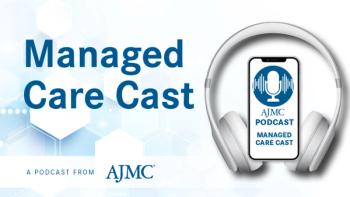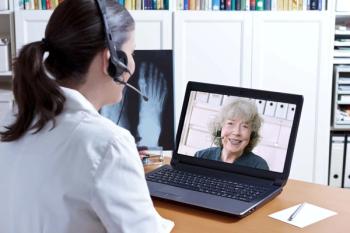
Technology
Latest News
Latest Videos

CME Content
More News

Virtual care not only means saved time and costs for employees, but improvements to employers' bottom lines, through more proactive management of health concerns, notes UCM Digital Health CEO and co-founder Keith Algozzine.

Developing a terminology strategy that reflects real-world practice and industry standards can help data scientists and other allied data professionals efficiently and accurately identify clinically relevant insights that help improve the health of populations and individual patients.

This new study examined uptake and use of a digital tool meant to aid in diabetes prevention.

First steps include assembling equity data and reaching out to veterans’ advocacy groups.

A letter from the guest editor highlights the potential for the findings in this special issue help us take steps toward realizing the promise of information technology in health care.

The report also suggests that ataxia telangiectasia and Rad3-related protein inhibition could be a valuable tool to overcome resistance.

Clinical calculators that do not include demographic variables may be biased, and their equity should be understood in the context of clinical guidelines.

To mark the publication of The American Journal of Managed Care®’s 12th annual health IT issue, on this episode of Managed Care Cast, we speak with Christopher M. Whaley, PhD, health care economist at the RAND Corporation, who focuses on health economics issues, including the influence of the COVID-19 pandemic on health care delivery.

Patients were also more likely to stay in treatment longer when their care was delivered virtually, a new survey has found.

The Patient-Centered Rheumatology Collaborative identified several critical areas for further intervention to improve the delivery of high-quality, patient-centered care during the COVID-19 pandemic and beyond.

The report suggests that high-resolution micro-ultrasound could help identify clinically significant lesions that would be missed with conventional MRI.

Big data has valuable implications for analyzing datasets and in day-to-day clinical practice, explained Ken Cohen, MD, director of translational research for Optum Care.

Telephone visits may offer a simple and convenient option to address patient primary care needs without raising safety concerns.

The ability to screen for trauma symptoms in certain high-risk populations could soon benefit from biomarker data gathered through wearable devices, according to a new study.

This study observed a rapid increase in the integration of telehealth- and COVID-19–related apps with electronic health records during the COVID-19 pandemic.

Access to electronic health information can be improved through provider assistance for optimal use of a patient portal.

This new report shows people who used the digital therapeutic saw an improvement of 14% to 15% in their average blood glucose levels regardless of their racial or ethnic category.

Patients are essential stakeholders in designing systems to capture social needs. The authors present key findings from patient interviews regarding social needs screening through technology-based modalities.

The study authors said the method also has the advantages of having a quick turnaround and a relatively low cost.

Differences in use of telehealth between commercial and Medicaid populations during the COVID-19 pandemic are associated with managed care enrollment.

Small practices reduced their use of telemedicine during early stages of the COVID-19 pandemic. Technical support may help expand and maintain telemedicine in small practices.

A survey of all Arizona physicians found that accountable care organization, clinically integrated network, or integrated delivery network participation was associated with higher use of health information exchange. However, there are exceptions and important barriers noted.

Primary care provider burnout was analyzed before and after a national initiative to optimize the electronic health record inbox notification system at the Veterans Health Administration.

This study examines trends in hospitals’ access to and use of data from electronic health record (EHR) developers that quantify clinicians’ time spent documenting clinical care in EHRs.

The findings include the identification of a 12-gene signature that could be used to categorize patients as high or low risk.























































